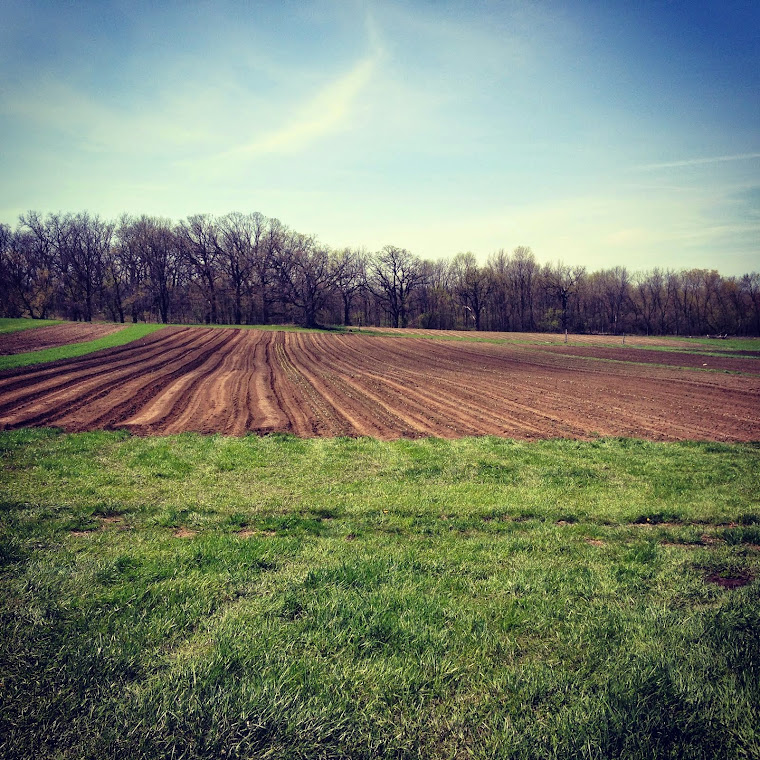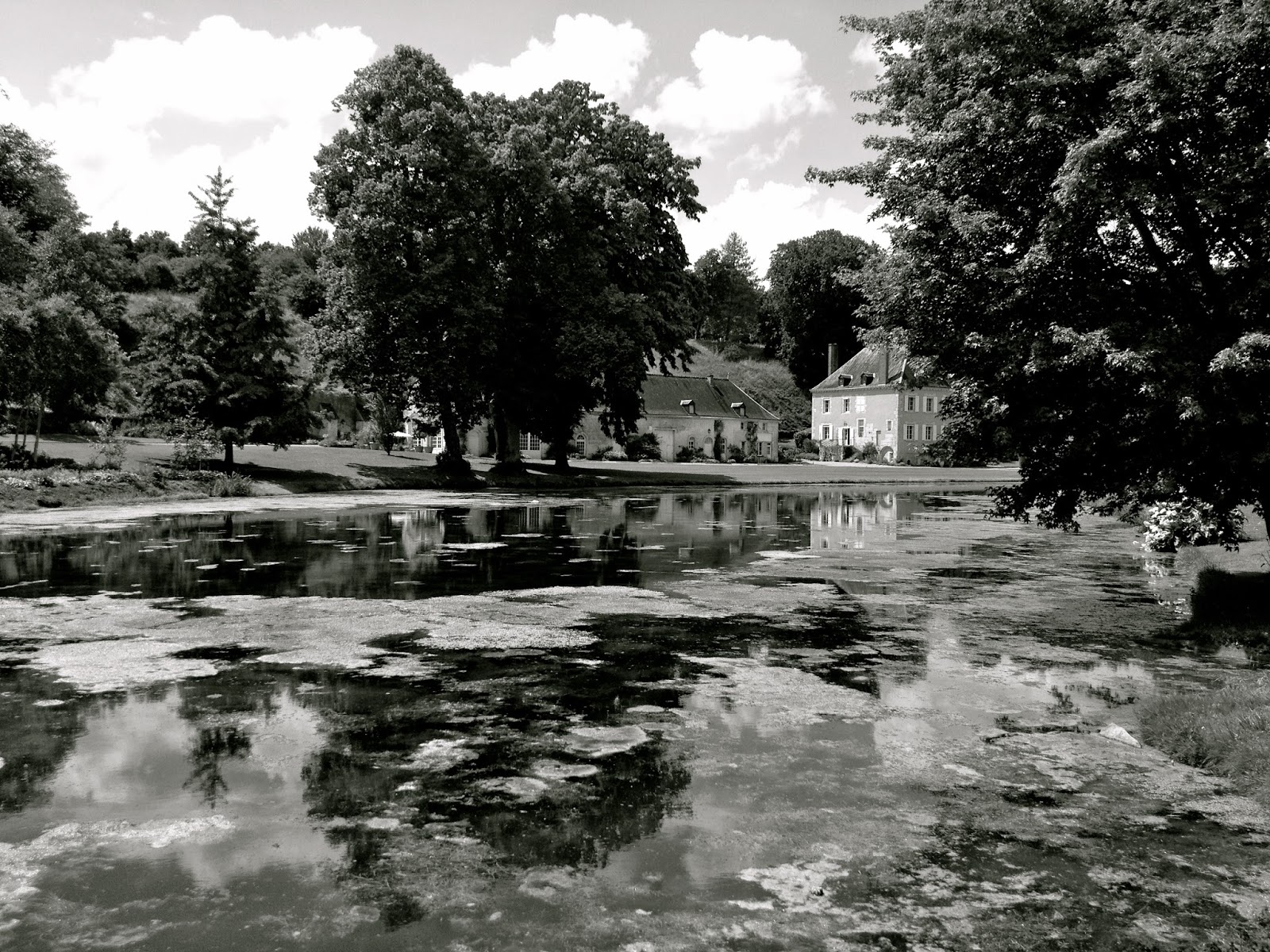It was such an honor and a pleasure to be able to work in this garden. As a gardener and student of landscape, being invited into Le Potager du Roi stirs such strong feelings that I cannot adequately express them with words. I was literally squealing with delight as I walked through the garden, admiring the union of ancient design and modern application. It was an incredibly inspiring place, indeed fit for a King!
Learning Through Landscapes
From the macro lens of the biosphere to the micro lens of a distinctive locale, landscapes make our lives possible. This blog is dedicated to discovering the knowledge within our landscapes - the evolving scenery of our human backdrop, and the link between culture and nature.
Saturday, June 28, 2014
Le Potager du Roi - The King's Kitchen Garden at Versailles
Walking past 13th century cathedrals to the gates of Le Potager du Roi, the King's Kitchen Garden in Versailles. My mind whirring with the visual evidence of a culture that has chosen to value history, food, and landscape. In a place that has had centuries to advance, evolve, and learn how to savor the important aspects of life. Listed by the French Ministry of Culture as one of the Remarkable Gardens of France, Le Potager du Roi embodies history and culture as well as beauty and comestible utility.
Inside Le Potager du Roi I met with an American man who decided to francophile his life twenty years ago by moving to France. A graduate of Cornell, he is now the director of this garden, and helps to create a student network between American landscape architecture students and those studying in Versailles at the Ecole Nationale Supérieur du Paysage, or the high state school in France for the training of landscape architects. Their studio is a stones throw away from Le Potager, and all four years of classes are awarded their own plot to tend inside the garden.
I met with a fourth-year student who will be interning at the Chicago Botanic Garden, where I myself was interning last year. It was exciting to discuss with him the revolution we both wanted to be a part of, the effort to redesign the built world. There is nothing quite like starting one's career and discovering that the vision you have is shared by someone in your own shoes, halfway around the world. It is a feeling of comradery that transcends global boundaries or nationalities, that upholds the intention of revolutionizing the way we live by first redesigning the spaces we inhabit.
Le Potager du Roi began as an effort to supply the table of King Louis XIV, who ordered his gardener Jean Baptiste de la Quintinie to construct a vast edible space on the edge of what would later become the Saint Louis district. The careful and well-planned arrangement of garden plots allowed Quintinie to create various micro-climates capable of growing fruits and vegetables outside of their typical season. During this time the kitchen garden was an enormous enterprise manned by 30 gardeners and countless varieties, including over 12,000 fruiting trees.
The varieties of vegetables were a topic of great discussion, as Madame de Sévigné remarked when she wrote, "the craze for peas continues; the impatience waiting to eat them, to have eaten them, and the pleasure of eating them our the three subjects our princes have been discussing for the past four days now." In today's world it is difficult to imagine a time when vegetables carried an interest as powerful as today's fascination with celebrities or professional athletes. An interest, I hope, that will re-surface as our culture begins to place a higher value on edible landscapes - the places that bring us life.
Today the garden produces over fifty tons of fruits and thirty tons of vegetables each year, sold in several farmers markets around Versailles as well as at the school. In addition to teaching modern tenets of landscape architecture, the school works hard to re-introduce historic varieties into the garden, while teaching the importance of historic land preservation and restoration.
It was such an honor and a pleasure to be able to work in this garden. As a gardener and student of landscape, being invited into Le Potager du Roi stirs such strong feelings that I cannot adequately express them with words. I was literally squealing with delight as I walked through the garden, admiring the union of ancient design and modern application. It was an incredibly inspiring place, indeed fit for a King!
It was such an honor and a pleasure to be able to work in this garden. As a gardener and student of landscape, being invited into Le Potager du Roi stirs such strong feelings that I cannot adequately express them with words. I was literally squealing with delight as I walked through the garden, admiring the union of ancient design and modern application. It was an incredibly inspiring place, indeed fit for a King!
Sunday, June 15, 2014
A Tour of le Jardins de Châteaux Villandry
Today I drove through poppy flanked roundabout after roundabout until I reached the town of Villandry, outside of Tours. I was here to discover the gardens of Châteaux Viallandry - the last châteaux built along the banks of the Loire during the Renaissance.
A 12th Century fortress was razed by Jean le Breton, the Finance Minister under François the First, in 1536 to accommodate the building of Châteaux Villandry. In the 19th century the traditional gardens were destroyed to create an English style landscape garden around the castle, which was fashionable at the time.
In 1906, however, the castle was purchased by Joachim Carvallo, a Spaniard who gave up his scientific career working under Nobel Prize winner Professor Richet to devote himself entirely to Villandry. He began by restoring the castle and then by restoring the traditional Renaissance gardens. Using a literary source "Les Plus Excellents Bastiments de France - or The Most Excellent Buildings in France), he worked with architects and archaeological surveys to recreate the vestiges of the old French garden.
Described by J. Androuet du Cerceau, a 16th century landscape architect, it was his original plans among others that were used to inspire Joachim Carvallo at the beginning of the 20th century when restoring Villandry.
Moving through the landscape to reach the Kitchen Garden, I was amazed at the use of alternating colors, geometrical patterns, and overall utility. Over 115,000 flowers and vegetables are planted each year, half of which are prepared in greenhouses on site. Maintaining the strict symmetry of the garden requires constant care. For instance, each winter the 1,015 lime trees scattered over the estate require a team of four gardeners over three months to prune. If you were to place all the box shrubs end to end, they would measure over 52 km!
The Kitchen Garden dates back to the Middle Ages. The first influence came from monks who preferred to lay their vegetables out in geometric shapes, with a particular preference for the cross. The standard roses, planted in symmetry, symbolize the monks digging and tending to their plots. The second influence came from Italy, which gave the monastic kitchen garden its more ornamental features: fountains, arbors, and square flower beds. The third and final influence came from French gardeners of the 16th century, which combined these two inspirations of monastic and Italian, and made way for the newly arriving additions from the Americas. They called this a decorative kitchen garden.
The wonderful thing about pairing ancient design with modern developments is the union of aesthetic and utility. The Water Garden, of classical inspiration, is centered around a large pond in the shape of a Louis XV mirror. It is flanked by a cluster of lime trees, and makes a tranquil resting point in the center of the compound.
Water management is essential in any garden, as there is no life without water. This large reflection lake serves two functions. One, as aesthetic, helps make this garden a beautiful place. The fountains, water staircases, moats, and pools all create a soothing and restful feeling through visual and sound.
The second function is utilitarian. Filled by a nearby stream that collects rainwater and runoff from 1,000 hectares of drained fields, this on-site reservoir provides irrigation for the surrounding gardens. Originally these were irrigated by an on-site artesian spring well, but excessive quantities were drawn from it by the industries of the Touraine and it dried up in the 1960s. Since then a pump has been installed in the lake and supplies the gardens with water when rainfall is scarce.
The ornamental gardens are comprised of four plots, each representing a different type of love. Their designs are constructed using box shrubs and flowers. "Tender love" is represented by hearts separated by flames, surrounding shapes of masks worn at balls. "Passionate love" also includes heart shapes, but broken by a representation of passion, laid out in a farandole stepping pattern (a French dance form) to evoke the feeling of dancing. "Flighty love" - my favorite garden - is symbolized by butterfly wings, central fan shapes, and love letters. "Tragic love," the last of the ornamental gardens, represent the blades of daggers and swords used in duels caused by the rivalry in love, with red flowers to symbolize bloodshed.
The beauty of this garden to me was thinking of all the different influences that went into it. French, Italian, Spanish, American, and most importantly - an ecological influence.
Friday, June 13, 2014
Gardens In Black and White
There is something to the power of a black and white photograph. It is almost distraction less. By lacking pigment other characteristics such as light, shadow, tone, and texture are allowed to dominate. There is an appeal to this greater range of shade and monochrome visual. Although today it may denote a certain nostalgic, historic, or even anachronistic feeling, I prefer to think of black and white photographs as simply wholesome.
Subscribe to:
Comments (Atom)










































































